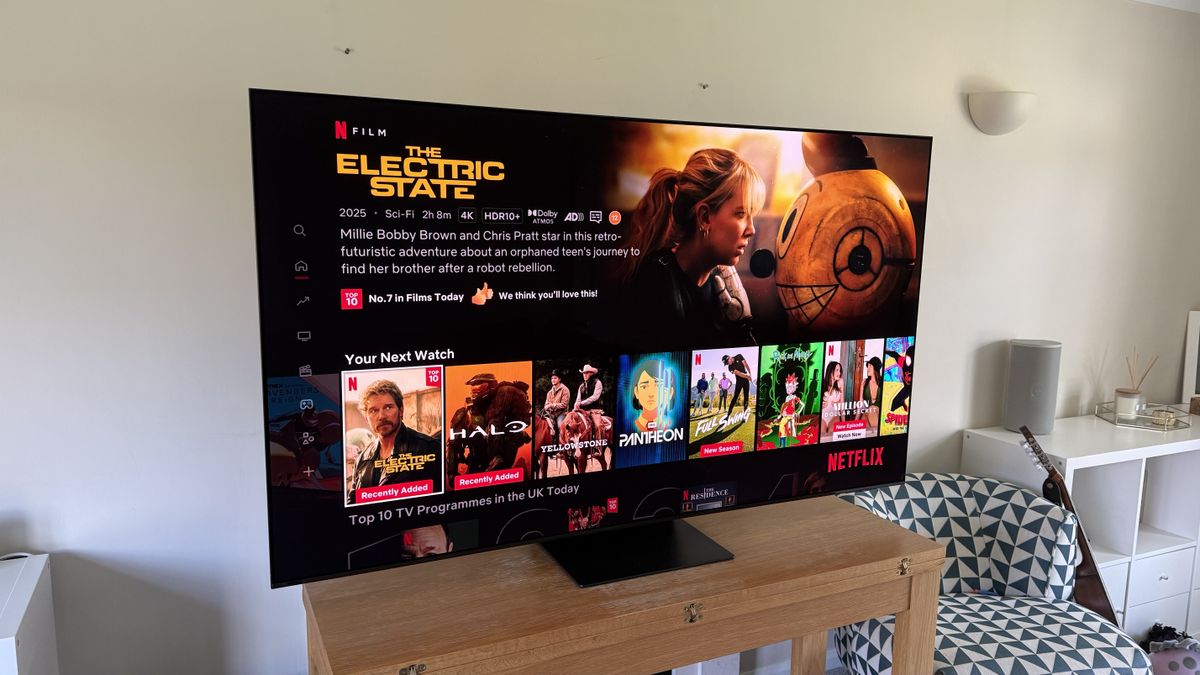Samsung TV owners can finally get better HDR from Netflix
Dolby Vision rival HDR10+ is finally supported by Netflix

Exciting news for Samsung TV owners: HDR10+ is now supported by Netflix.
For those not already in the know, HDR10+ is a 'dynamic' HDR format that uses metadata to adapt the HDR performance frame-by-frame to the capabilities of the display.
Compared to standard HDR10, which is the best that Samsung owners could get from Netflix up until now, the new HDR10+ streams should, if implemented correctly, boost contrast and improve shading and detail in the brightest parts of the picture.
Below, you can see an example, provided by Netflix, of the sort of difference that should be experienced when moving from HDR10 to HDR10+.


HDR10+ is a rival to Dolby Vision, which is the other dynamic HDR format in town.
But while both formats adapt the HDR delivery to the content and specific display capabilities, Dolby Vision goes a step further by also applying picture settings that are designed to deliver the content as the director intended.
HDR10+, on the other hand, is an extra layer of processing that is added to whatever picture preset you have already selected, be that 'Standard', 'Movie' or *shudder* 'Dynamic'.
Get the What Hi-Fi? Newsletter
The latest hi-fi, home cinema and tech news, reviews, buying advice and deals, direct to your inbox.
There are pros and cons to each approach, but we're broadly more in favour of Dolby Vision. It's not without its issues but, in most cases, it's an entirely hands-off way to get a fairly well calibrated and broadly cinematically accurate picture.
This Netflix HDR10+ news is still a big deal for Samsung owners, though, as Samsung is the only major brand that produces TVs that support HDR10+ but not Dolby Vision.
LG and Sony support Dolby Vision but not HDR10+, while brands such as Panasonic, Philips, TCL and Hisense support both across most of their respective ranges.
Netflix is actually the last of the major streaming services to offer HDR10+ support – Amazon Prime Video has had it for ages, while Apple TV+ and Disney+ added it relatively recently. All four services also support Dolby Vision.
I've checked, and the Samsung S95C OLED that I'm currently using at home is receiving the new HDR10+ streams as promised via the built-in Netflix app (you can see the HDR10+ logo in the image at the top of this story).
Netflix itself has outlined these requirements for HDR10+ to work:
1.Member must have a Netflix Premium plan subscription
2. Title must be available in HDR10+ format
3. Member device must support AV1 & HDR10+. Here are some examples of compatible devices:
SmartTVs, mobile phones, and tablets that meet Netflix certification for HDR10+
Source device (such as set-top boxes, streaming devices, MVPDs, etc.) that meets Netflix certification for HDR10+, connected to an HDR10+ compliant display via HDMI
4. For TV or streaming devices, ensure that the HDR toggle is enabled in our Netflix application settings: https://help.netflix.com/en/node/100220
MORE:
These are the best Samsung TVs you can buy right now
Not committed to Samsung? Then here are the overall best TVs
Samsung also has a Dolby Atmos rival – here's everything you need to know about Eclipsa Audio
Tom Parsons has been writing about TV, AV and hi-fi products (not to mention plenty of other 'gadgets' and even cars) for over 15 years. He began his career as What Hi-Fi?'s Staff Writer and is now the TV and AV Editor. In between, he worked as Reviews Editor and then Deputy Editor at Stuff, and over the years has had his work featured in publications such as T3, The Telegraph and Louder. He's also appeared on BBC News, BBC World Service, BBC Radio 4 and Sky Swipe. In his spare time Tom is a runner and gamer.
You must confirm your public display name before commenting
Please logout and then login again, you will then be prompted to enter your display name.